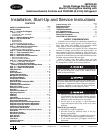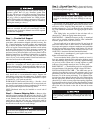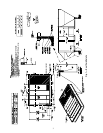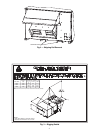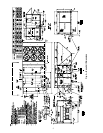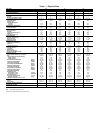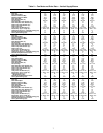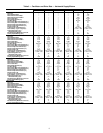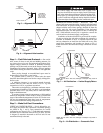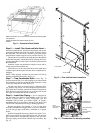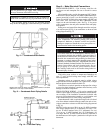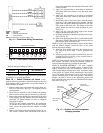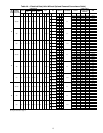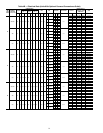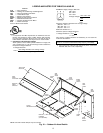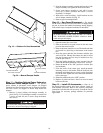
9
Step 4 — Field Fabricate Ductwork — On vertical
units, secure all ducts to roof curb and building structure. Do
not connect ductwork to unit. For horizontal applications, field-
supplied flanges should be attached to horizontal discharge
openings and all ductwork secured to the flanges. Insulate and
weatherproof all external ductwork, joints, and roof openings
with counter flashing and mastic in accordance with applicable
codes.
Ducts passing through an unconditioned space must be
insulated and covered with a vapor barrier.
If a plenum return is used on a vertical unit, the return
should be ducted through the roof deck to comply with applica-
ble fire codes.
A minimum clearance is not required around ductwork.
Cabinet return-air static shall not exceed –0.35 in. wg with
economizer or 0.45 in. wg without economizer.
These units are designed for a minimum continuous return-
air temperature in heating of 50 F (dry bulb), or an intermittent
operation down to 45 F (dry bulb), such as when used with a
night set-back thermostat.
To operate at lower return-air temperatures, a field-supplied
outdoor-air temperature control must be used to initiate both
stages of heat when the temperature is below 45 F. Indoor com-
fort may be compromised when these lower air temperatures
are used with insufficient heating temperature rise.
Step 5 — Make Unit Duct Connections
VERTICAL CONFIGURATION — Unit is shipped for ver-
tical supply and return duct connections. Ductwork openings
are shown in Fig. 1 and 4. Duct connections for vertical
configuration are shown in Fig. 7. Field-fabricated concentric
ductwork may be connected as shown in Fig. 8 and 9. The unit
is designed to attach the ductwork to the roof curb. Do not
attach duct directly to the unit.
HORIZONTAL APPLICATIONS — Horizontal units are
shipped with outer panels that allow for side by side horizontal
duct connections. If specified during ordering, the unit will be
shipped with the vertical duct openings blocked off from the
factory, ready for side supply installation. If the horizontal
supply/return option was not specified at time of ordering the
unit, a field-installed accessory kit is required to convert the
vertical unit into a horizontal supply configuration.
Installation of the duct block-off covers should be complet-
ed prior to placing the unit unless sufficient side clearance is
available. A minimum of 66 in. is required between the unit
and any obstruction to install the duct block-off covers. Side
supply duct dimensions and locations are shown on Fig. 4.
Install ductwork to horizontal duct flange connections on side
of unit.
For vertical supply and return units, tools or parts could
drop into ductwork and cause an injury. Install a 90 degree
turn in the return ductwork between the unit and the condi-
tioned space. If a 90 degree elbow cannot be installed, then
a grille of sufficient strength and density should be installed
to prevent objects from falling into the conditioned space.
SEE
NOTE
SEE
NOTE
AIR
OUT
AIR
IN
HEAT
EXCHANGER
ECONOMIZER
SEE
NOTE
SEE
NOTE
AIR OUT
AIR IN
HEAT
EXCHANGER
AIR OUT
ECONOMIZER
NOTE: Do not drill in this area; damage to basepan may result in
water leak.
Fig. 7 — Air Distribution — Vertical Supply/Return
NOTE: Do not drill in this area; damage to basepan may result in
water leak.
Fig. 8 — Air Distribution — Concentric Duct
ALIGNMENT
HOLE SHOULD
LINE UP WITH
ROOF CURB
EDGE FLANGE
EDGE FLANGE
ALIGNMENT
HOLE
(IN BASE RAIL)
Fig. 5 — Alignment Hole Details
SUPPLY
OPENING
RETURN
OPENING
ROOF CURB
CURB
SUPPLY
OPENING
CURB
RETURN
OPENING
ALIGNMENT
HOLES FOR
CURB-BOTH
SIDES
Fig. 6 — Alignment Hole Location



